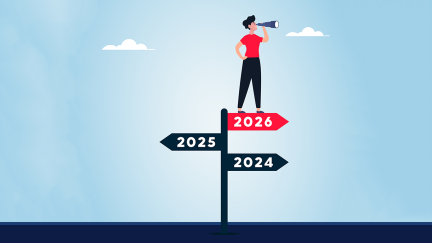Never miss a story — sign up for PLANSPONSOR newsletters to keep up on the latest retirement plan benefits news.
PSNC 2021: Communications That Connect — Getting Through to Participants
Experts say specific communication strategies can help engage participants and lead to better outcomes.
The last panel at the virtual 2021 PLANSPONSOR National Conference (PSNC) reviewed behavioral science techniques employers can use when communicating with their participants, and the methods that grab the most attention.
Judy Leung, benefits manager at Sony Corporation of America, a winner of one of this year’s PLANSPONSOR Plan Sponsor of the Year awards, explained communication strategies the company offers in conjunction with its plan provider. She said Sony and its provider created a strategy in which participants are invited to reimagine what their retirement experience will look like through the use of “eye-catching” images. With this concept, the company reached a 53% open rate with its communications and a 15% click-through rate.
“These images were really evocative of an enhanced reality that we added to the communications, and we found that to be effective,” she said. Leung noted that the company and its provider wanted participants to view their retirements through a personalized lens and that they didn’t want to use typical marketing materials. “With a lot of off-the-shelf communications, you see a lot of images with couples relaxing on the beach, but we really wanted to stand out from that and get our participants excited and motivated with our communications,” she added.
Leung also recalled another campaign the company implemented last year in which Sony and its provider targeted participants who were fully invested in the plan’s stable value plan design. She explained how her team created separate messaging for those under age 60 and those older than 60.
For participants younger than 60, the company sent talking points on the importance of staying diversified with investments during periods of market volatility and informed participants of an upcoming webinar to attend, hosted by the provider and company.
For the segment that was age 60 and over, Sony sent a message addressing concerns participants often have when experiencing a down market during retirement, noted investment principles to follow and also encouraged participants to sign up for the webinar. As a result, these communications received a 35% open rate and 9% click-through rate, according to Leung.
“It definitely resonated with participants, who signed up for the webinar and took action after,” she said. “It was very effective in just segmenting our population and finding the areas where we can help participants with their retirement.”
Christina M. Pihos, senior vice president, retirement marketing at PIMCO, described communication strategies her team and clients use to increase engagement, adding that focusing on content and language is important. “Being in the world of asset management, we like to explain a lot,” she said.
Pihos said positivity plays a large role in behavioral finance and its influence on participants. Using positive, actionable messaging; taking each piece of information apart; and being consistent with messaging will likely lead to higher engagement rates, she added.
“We’re taking it to a level where everyone can understand it, and it resonates and makes sense, to make sure that we’re getting people to a more comfortable place when making retirement decisions,” she said.
Additionally, Pihos urged plan sponsors to regularly check on metrics to refine their strategies. For example, she said, the coronavirus pandemic not only altered workplaces for participants, it changed their attitudes and behaviors about wellness and finances. “Not only is the environment changing, but your organization is changing [too],” she said.
Pihos also asked plan sponsors to identify any objectives they have with plan design, participation rates, etc., because this will determine when and how often employers should check up on their participants regarding benefits. Lasty, organizing a dashboard with metrics allows employers to assess plan improvement. “If you don’t, then you’ll have nothing to react to and nothing to evolve your communication plan with,” Pihos observed.
The panel also discussed new trends across the marketplace, specifically personalization. As personalization strategies become affordable for plan sponsors, employers are more likely to add tailored strategies.
“It’s becoming huge because ultimately every time [participants] received a message, in the back of [their] minds, they think ‘It doesn’t apply to me,’” Pihos said. “We’re starting to see more personalization where there is not much lift by the participant but still output.”
For plan sponsors that mainly use automatic features, regular communications are still integral to participants, the panelists agreed. Checking in on participants multiple times a year, especially during open enrollment, can ensure better plan engagement, Pihos said. She said some studies have found most subjects need to be reminded of the same message seven times before they act.


